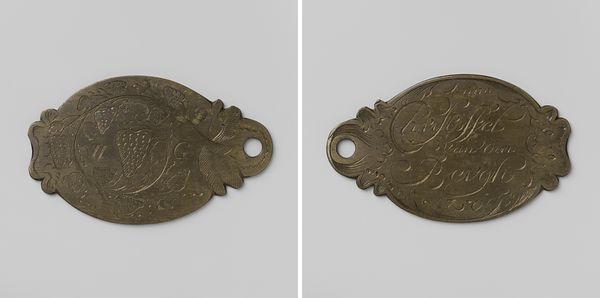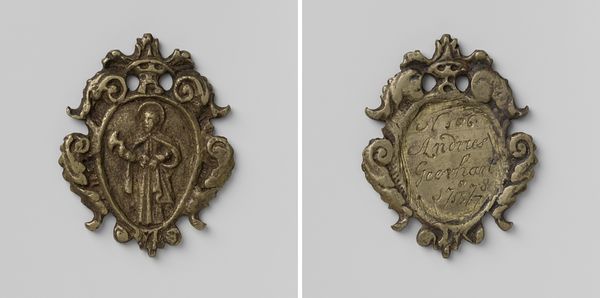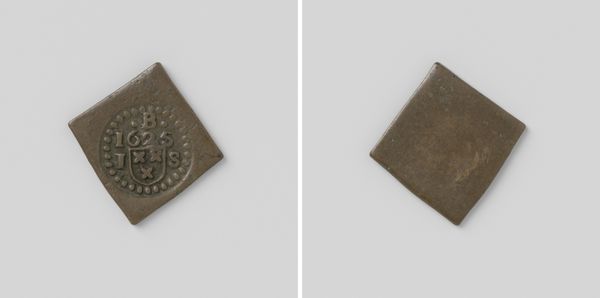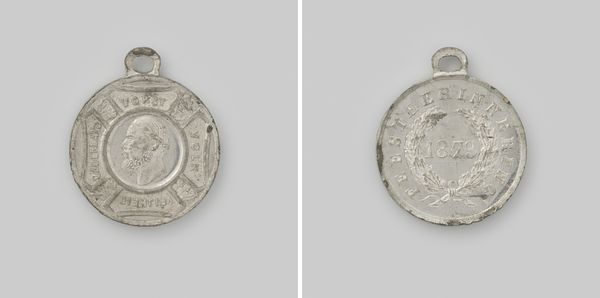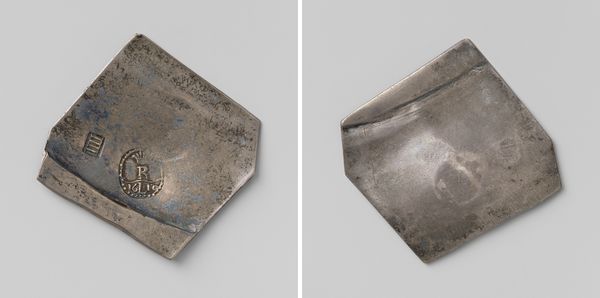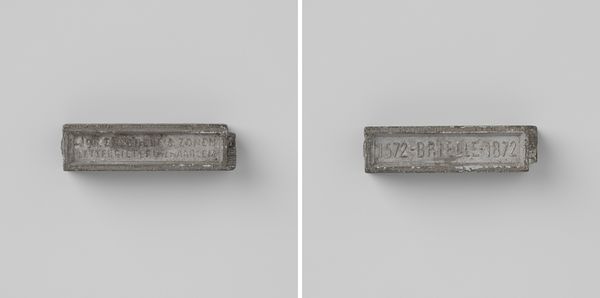
Dimensions: height 7.2 cm, width 5.9 cm, weight 47.66 gr
Copyright: Rijks Museum: Open Domain
Editor: Here we have a metal relief sculpture, entitled "Draagteken van Johann Peter Eckert," created sometime between 1753 and 1801 by an anonymous artist. The design feels quite ornate and decorative, but also… cold, I guess, due to the material? How do you interpret this piece? Curator: That coldness you feel, that's the weight of history, the stories these symbols whisper across time. This isn't just decoration; it's cultural memory made manifest. The very choice of metal speaks to permanence, a desire to fix identity. Consider the Baroque frame—swirling flourishes containing carved names. Editor: So, it’s a nameplate? Is that what *Draagteken* means? Curator: It functioned as a sign, and the frame speaks volumes. It suggests a desire to enshrine the Eckert family. It invites us to consider how names, dates, even decorative styles themselves, accrue symbolic weight over generations. What purpose does something like this have? What type of legacy does the metal symbolize? Editor: I suppose that back then metal objects were harder to come by. It wasn’t that long since alchemy… Curator: Precisely. A bit of alchemy, if you will. And that changes our perspective, doesn't it? An object not simply of metal, but imbued with aspiration and the desire to last, just like a family name. Editor: It’s interesting to consider how the value we place on objects changes so much with context. This artwork reminds me that an object becomes important depending on what the artist, or the people using it, needed it to communicate at the time.
Comments
No comments
Be the first to comment and join the conversation on the ultimate creative platform.
